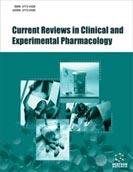Abstract
Haemovigilance is an organized and effective process of monitoring, identifying, reporting, investigating and analyzing adverse events and reactions in case of blood transfusion and during the manufacturing process of blood products. This system ensures the quality and safety aspects of blood transfusion, that bring out corrective and preventing actions and advancement in the transfusion system. Nowadays, most of the developed countries have implemented Haemovigilance in order to monitor adverse reactions and events associated with blood donation and transfusion. This review article is about steps that are required to be taken for the implementation of Haemovigilance on a National level as an Indian perspective.
Keywords: Haemovigilance, adverse reactions, regulatory requirements, benefits, blood transfusion, acute haemolytic.
Graphical Abstract
[http://dx.doi.org/10.1111/voxs.12084]
[http://dx.doi.org/10.7860/JCDR/2016/21029.8868] [PMID: 28050389]
[http://dx.doi.org/10.1111/j.1423-0410.2010.01442.x] [PMID: 21175656]
[http://dx.doi.org/10.3329/jhpn.v27i2.3368] [PMID: 19489420]
[http://dx.doi.org/10.4103/0973-6247.175384]
[http://dx.doi.org/10.4103/0973-6247.175384] [PMID: 27011662]
 4
4




